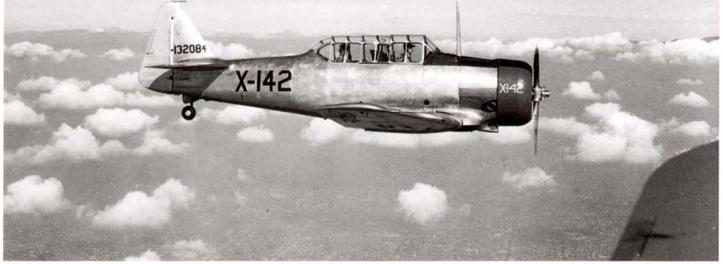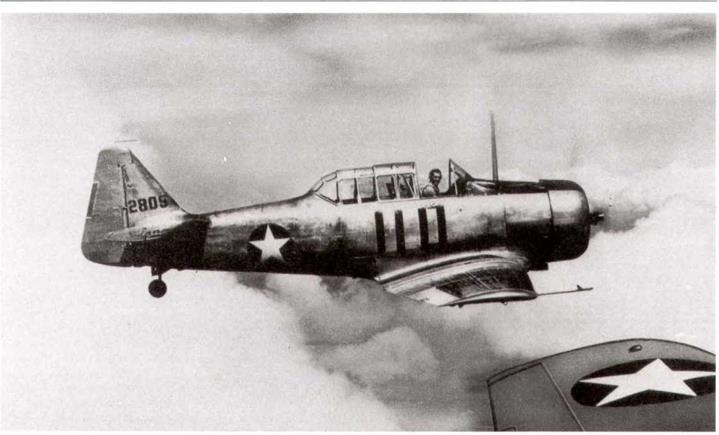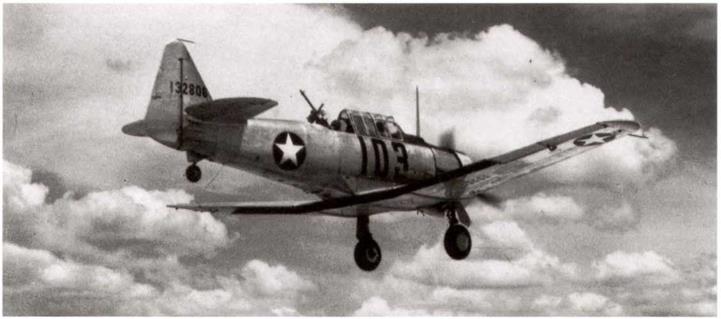Results of tests of white camouflage in anti-submarine operations, Langley Field, VA, August 31,1942
Continuing the effort to get the use of white camouflaged approved for anti-submarine operations, tests had been run at Langley Field, VA, comparing the visibility of different camouflage colors used on B-17E and B-34 airplanes. The colors used were an off white and a brown (olive drab) on one of each type of airplane. It was found that the white painted airplanes had a definite advantage over the brown painted airplanes in anti-submarine operations. It was recommended that:
a. With least practical delay, paint all aircraft inashadeof “offwhite”. Ashadea little more “off white” than those used in these tests was considered preferable.
b. Future aircraft destined for anti-submarine operations should be properly camouflaged prior to delivery to a tactical unit. (Regrettably, it was to be quite a while before any top-level action was taken to implement these recommendations, as we shall see – author).
|
North American AT-6C-NT, 41-32084, without the fuselage eocarde. The “X” shows that it was from Luke Field. (Harry Gann) |
|
North American AT-6C-NT, 41-32805, is front the first batch of 963 AT*6Cs, This one is carrying the fuselage cocarde and has its school numbers moved forward. Note that it has a replacement rudder so the first two digits of the radio call number are missing. (March AFB Museum) |
New AAF Spec. No. 24115 Protective Coatings and Finishes (for Aircraft Wood Surfaces), issued on September 3, 1942.
The AAF had an increasing number of new types of aircraft under development using wood as the main material. It was found necessary to issue a spec, covering the requirements for protective coatings and finishes on these aircraft and Spec. No. 24115 was issued on September 3, 1942. (this was exactly three years after the declaration of war by Britain and France on Germany brought the Allies into World War II. This spec, had a very short life, being canceled and replaced by a new Army-Navy Aeronautical spec., AN-C-83, on July 1,1943 – author.)
For plain wood surfaces, interior enclosed surfaces were to receive at least two coats of a clear sealer. Interior open surfaces were to be finished with at least one coat of clear sealer, one coat of surfacer and one coat of the specified color, or at least two coats of pigmented sealer and one coat of the specified color. Exterior surfaces were to be finished the same as interior surfaces, except that at least two coats
|
North American AT-6C-NT, 41-32806, shows that it does not have the “U. S. ARMY” under the wings, so it is seen later than October 1942. (March AFB Museum) |
|
Curtiss P-40Es of the 16th FS/51st FG, of 14th AF in China on October 24, 1942. From the camouflage pattern, they are ex-RAF aircraft transferred to the AAF. (USAF) |
of the specified color were to be applied. Wood surfaces that were fabric covered were to be given at least one coat of sealer and either two coats of clear dope and one layer of suitable fabric, or one coat of clear dope and one layer of pre-doped fabric. After the fabric had been applied, the finish was to be completed by the use of three coats of clear dope (including the taping dope) and two coats of pigmented dope. The first coat of clear dope used on either the pre-doped fabric or the un-doped fabric was to be thiimed 50% with thinner.
All color coats were to be either camouflage enamel or lacquer.














